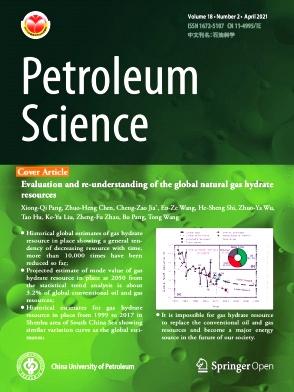Molecular transformation of heavy oil during slurry phase hydrocracking process: Influences of operational conditions
IF 6
1区 工程技术
Q2 ENERGY & FUELS
引用次数: 0
Abstract
The influences of reaction temperature, duration, pressure, and catalyst concentration on the molecular transformation of residual slurry phase hydrocracking process were investigated. The molecular composition of the heteroatom compounds in the residue feedstock and its upgrading products were characterized using high-resolution Orbitrap mass spectrometry coupled with multiple ionization methods. The simultaneous promotion of cracking and hydrogenation reactions was observed with increasing of the reaction temperature and time. Specifically, there was a significant increase in the cracking degree of alkyl side chain, while the removal of low-condensation sulfur compounds such as sulfides and benzothiophenes was enhanced. In particular, the cracking reactions were more significantly facilitated by high temperatures, while an appropriately extended reaction time can result in the complete elimination of the aforementioned sulfur compounds with a lower degree of condensation. Under conditions of low hydrogen pressure and catalyst concentration, the products still exhibit a high relative abundance of easily convertible compounds such as sulfoxides, indicating a significant deficiency in the effectiveness of hydrogenation. The hydrogen pressure exhibits an optimal value, beyond which further increments have no effect on the composition and performance of the liquid product but can increase the yield of the liquid product. At significantly high catalyst concentration, the effect of desulfurization and deoxidation slightly diminishes, while the aromatic saturation of highly condensed compounds was notably enhanced. This hydrogenation saturation effect cannot be attained through manipulation of other operational parameters, thereby potentially benefiting subsequent product processing and utilization. This present study demonstrates a profound comprehension of the molecular-level residue slurry phase hydrocracking process, offering not only specific guide for process design and optimization but also valuable fundamental data for constructing reaction models at the molecular level.
求助全文
约1分钟内获得全文
求助全文
来源期刊

Petroleum Science
地学-地球化学与地球物理
CiteScore
7.70
自引率
16.10%
发文量
311
审稿时长
63 days
期刊介绍:
Petroleum Science is the only English journal in China on petroleum science and technology that is intended for professionals engaged in petroleum science research and technical applications all over the world, as well as the managerial personnel of oil companies. It covers petroleum geology, petroleum geophysics, petroleum engineering, petrochemistry & chemical engineering, petroleum mechanics, and economic management. It aims to introduce the latest results in oil industry research in China, promote cooperation in petroleum science research between China and the rest of the world, and build a bridge for scientific communication between China and the world.
 求助内容:
求助内容: 应助结果提醒方式:
应助结果提醒方式:


